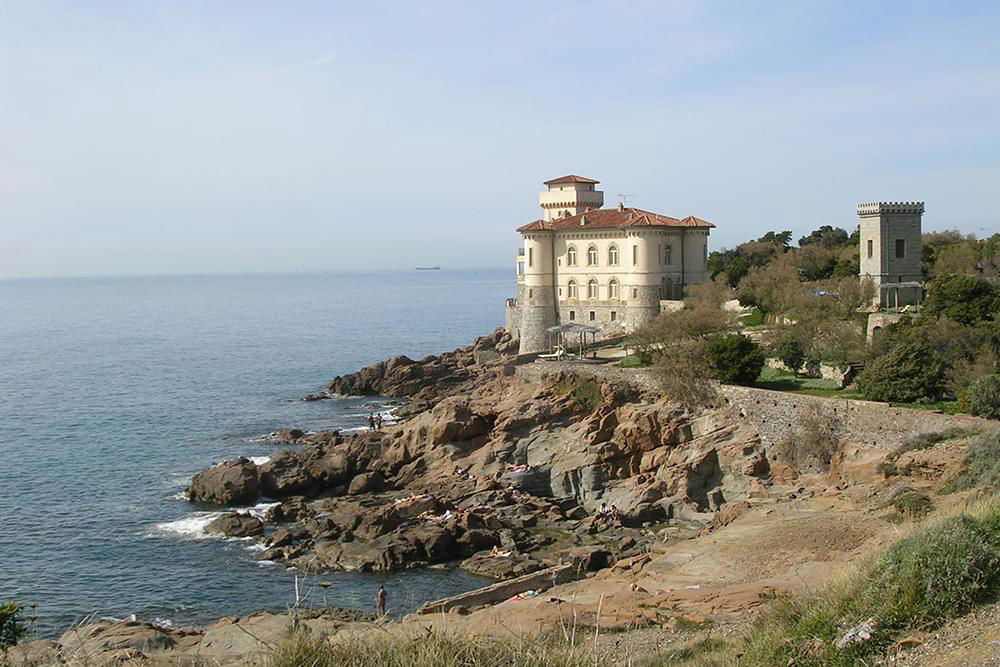
The province of Livorno is one of the most distinctive regions in Tuscany. Stretching along the Tyrrhenian Sea and inland into lush countryside, it blends maritime spirit with pastoral serenity, offering a captivating alternative to the more crowded heart of Tuscany.
While the city of Livorno is its capital, the province itself reveals much more than urban life. It offers a combination of Etruscan ruins, forested hills, charming seaside villages, and fertile wine-producing lands that together create a rich and diverse experience.
 Province of Livorno, Tuscany
Province of Livorno, TuscanyThe Etruscan Coast is one of the crown jewels of the province of Livorno. It stretches from Livorno southward, past popular beaches and hidden coves, with long stretches of pine woods and Mediterranean brushland running along its shores. It is named after the ancient civilization that once dominated the area, and many traces remain in archaeological parks and ruins.
Among the most loved seaside towns are Castiglioncello, San Vincenzo, and Marina di Bibbona. These coastal gems are ideal for beach lovers and divers, offering crystal-clear water, rocky inlets, and golden sand framed by umbrella pines. The air smells of salt and pine resin, creating a peaceful and invigorating atmosphere.
Beyond the coast, the province of Livorno has a compelling historical and cultural heritage. The hilltop town of Campiglia Marittima is a fine example, with medieval alleys, stone houses, and panoramic views over vineyards and the sea. Nearby Suvereto is another gem, known for its stone buildings, charming piazzas, and wine cellars tucked into ancient walls.
Populonia is perhaps the most remarkable historical site in the area. Once a powerful Etruscan city, it is now an archaeological park with ruins of temples, necropolises, and city walls overlooking the Gulf of Baratti. The combination of ancient history and natural beauty makes it one of the most evocative places in all of Tuscany.
The province is home to several protected natural areas, including the Rimigliano Coastal Park and the forested reserve of Montioni. These places offer hiking and cycling trails that wind through oak and chestnut woods, along rivers, and down to hidden stretches of beach. They are ideal for birdwatching, picnics, or simply escaping into silence.
The Livorno Hills, just inland from the city, provide a haven for outdoor enthusiasts. Here, ancient trails pass old monasteries and abandoned watchtowers, and in spring the landscape explodes in color with wildflowers and aromatic herbs. It is a place where visitors can still encounter the timeless rhythm of rural Tuscany.
The province of Livorno is part of the famed Bolgheri wine region, which has earned international acclaim for its Super Tuscan wines. The road through the vineyards, known as the "Strada del Vino," winds through olive groves and estates that produce some of Italy’s finest red wines, including Sassicaia and Ornellaia.
Food here is equally rich in flavor and tradition. The cuisine merges Tuscan and coastal influences, with hearty dishes such as cacciucco, a local fish stew, paired with rustic breads, olive oil, and seasonal vegetables. Markets in small towns offer pecorino cheeses, honey, and handmade pasta, all infused with the character of the land.
Inland from the coast, the province is dotted with peaceful villages and farmhouses where life moves slowly. Bolgheri itself, with its cypress-lined avenue and brick castle gate, is one of the most iconic towns in the area. Its cobbled streets are lined with wine bars, artisan shops, and flower-covered balconies.
Further into the hills, villages like Sassetta and Monteverdi Marittimo offer authentic Tuscan experiences, where olive oil is still pressed in local mills and festivals celebrate the chestnut harvest or the grape vintage. These places remain largely undiscovered by mass tourism, preserving their quiet charm and traditions.
The province of Livorno also includes the island of Capraia, part of the Tuscan Archipelago. This volcanic island is a paradise for hikers, snorkelers, and nature lovers. It is covered in wild herbs, surrounded by deep blue sea, and almost entirely free of cars and modern development.
Capraia is reached by boat from Livorno or Piombino and offers a unique opportunity to experience Tuscany from a different angle. Its small village, colorful harbor, and network of footpaths make it ideal for a quiet retreat in touch with sea and sky.
The province of Livorno hosts a wide array of events and traditions that bring locals and visitors together. Summer sees musical festivals along the coast, wine events in Bolgheri, and food fairs in hilltop towns. The Festa di San Cerbone in Populonia and the Palio della Costa Etrusca are among the most colorful and rooted in local history.
Art and culture are also deeply embedded in this region. Painters, writers, and sculptors have long been drawn to the light and quiet of this part of Tuscany, and galleries and artisan workshops still thrive in many of the small towns and coastal villages today.
The province of Livorno offers a complete and unique version of Tuscany. It has the sea and the countryside, history and modernity, gourmet food and rustic charm. Unlike the more famous Tuscan provinces, Livorno remains a place to be discovered, where authenticity and natural beauty still prevail.
Whether you are seeking seaside relaxation, cultural immersion, scenic landscapes, or delicious wine and food, the province of Livorno is a destination that will surprise and captivate you. It invites travelers to slow down, explore, and savor the many layers of Tuscany’s coastal soul.

More Details



